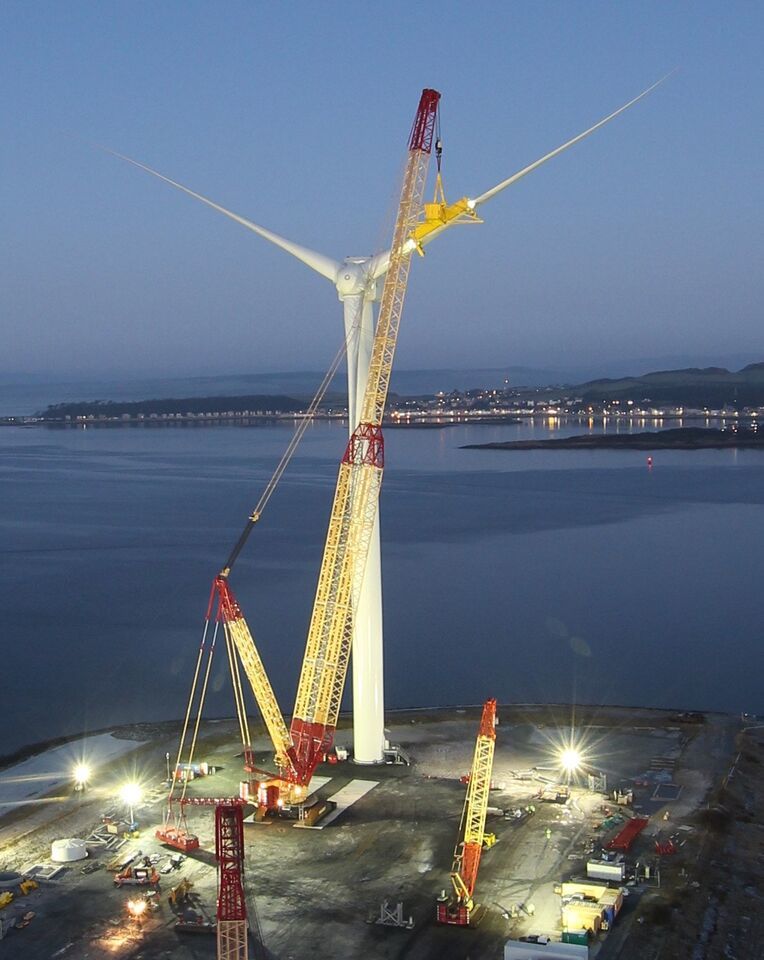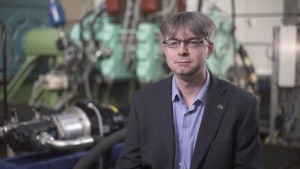
A team of Scots scientists whose technology has been described as significant as James Watt’s steam engine, have won engineering’s top “Oscar”.
And they hope the honour will kick-start progress towards delivering more viable green energy.
HRH Prince Philip, Duke of Edinburgh, last night presented the UK’s longest running and most prestigious prize for engineering innovation to a team from Edinburgh-based Artemis Intelligent Power.
The team won the UK’s premier engineering prize, the MacRobert Award, for its ground-breaking Digital Displacement hydraulic power system, that effectively doubles the power available from wind turbines.
The Royal Academy of Engineering MacRobert Award has previously recognised now-indispensible technologies such as the catalytic converter and the CT scanner.
Artemis managing director Dr Niall Caldwell said: “We’re obviously delighted to win such a prestigious award. It is recognition for the team and our approach to invention. We have been swimming against the tide in creating hyrdraulic technology that will significantly improve offshore power generation. I hope the industry will sit up and take notice.”
Dame Sue Ion, chairwoman of the MacRobert judging panel, said: “Artemis has achieved a technical advance of global importance, making significant power delivery from offshore wind considerably more credible and realisable, and facilitating the global goal of reducing CO2 emissions.
“This is not simply evolutionary improvement but a complete step change.”
Because their gearboxes can’t be scaled up, current wind turbines are limited to an average power output of around 3.5MW – enough to power 3,300 households.
Using digitally controlled hydraulics instead of a traditional gearbox, Artemis is improving the power capacity and reliability of turbines, so that they can provide much higher orders of magnitude than a standard turbine.
It is predicted that offshore wind will supply 8-10% of the UK’s electricity annually by 2020, however there have been significant challenges to making offshore wind a cost-effective energy solution.
Dr Caldwell added: “The Government has to think again about incentives for green energy if it wants to achieve its carbon reduction targets. It has become almost toxic to talk about a green levy for bill payers and there is considerable opposition to onshore wind turbines.”
“But we must avoid a scaling back of ambition. There are very few people who can object to turbines 20km offshore.”
The technology is currently being installed in a 7MW turbine (already double the output of conventional turbines) in Scotland, with much larger planned.
Dr Gordon Masterton, a judging panel member said it was a “stunning engineering breakthrough”
He added: “The team has done for hydraulic engines what James Watt did for steam engines; they have totally transformed the efficiency and range of potential applications.
Known for spotting the ‘next big thing’ in the technology sector, the MacRobert Award identifies outstanding innovation with proven commercial success and tangible social benefit.
Previous winners include EMI Ltd, who in 1972 developed the CT Scanner, a vital medical device that can now be found in almost every hospital in the developed world.
Artemis, which employs 50 people, was established in 1994 as a privately owned spin-out from the University of Edinburgh. In 2010 it was acquired by Japan’s Mitsubishi Heavy Industries.
The two organisations are now jointly developing the technology for multi-megawatt offshore wind turbines while Artemis is also developing the transmission system for other sectors to improve efficiency and reduce fuel consumption.
Recommended for you

